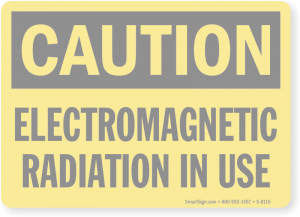
A couple of days ago I received a message from Dr. Lennart Hardell. If you are familiar a bit with the issue of EMF risks for human health, you know this name for sure. Dr. Hardell is a well-known oncologist and scientist in radiofrequency (RF) radiation risks from Orebro University, Sweden, who firstly demonstrated significantly increased risk of brain tumors in heavy users of cell phones. These days Dr. Hardell and other well-known scientists over the world call for the new, science-based safety limits on human RF exposure instead of current out of date ICNIRP limits. I proposed to post his message and the appeal here on my blog, and Dr. Hardell supported the idea. So, below you’ll find his message and the text of appeal. Those of you, who share the concern and are relevant to support the call, please, send your support directly to the emails indicated in the message. And, yes, definitely, my name will be there among those scientists, who support the appeal. By the way, you’ll find a huge amount of reliable scientific information on the issue in the appeal references.
Be informed and healthy,
Dr. Igor Yakymenko
THE MESSAGE FROM DR. LENNART HARDELL:
Dear Scientists, Medical Doctors and NGOs,
The International Commission on Non-Ionizing Radiation Protection (ICNIRP) issued draft Guidelines on July 11, 2018 for limiting exposure to electric, magnetic and electromagnetic fields (100 kHz to 300 GHz). These guidelines are unscientific, obsolete and do not represent an objective evaluation of the available science on effects from this form of radiation. ICNIRP’s opinion and guidelines are unscientific and protect industry, not public health.
New truly protective guidelines are needed. We ask the United Nations, the World Health Organization, and all governments to support the development and consideration of medical guidelines, that are independent of conflicts of interests in terms of direct or indirect ties to industry, that represent the state of medical science, and that are truly protective.
Please read the entire call in the enclosed document. We invite you to support this call for new science based protective guidelines for exposure to non-ionizing radiation. This call to sign is open to scientists and/or physicians, and non-governmental organizsations (NGOs). Please respond before: October 30, 2018
For scientists and/or physicians: please give name, title, organzation (if applicable), city and country. Respond to: lennart_hardell@hotmail.com
For NGOs: please give name of organization, contact person, and country. Respond to: mona@stralskyddsstiftelsen.se
Please mark your response: EMFcall
This call will be officially launched November 1, 2018
Yours sincerely,
Lennart Hardell, MD, PhD
The Environment and Cancer Research Foundation
Örebro, Sweden
TEXT OF THE APPEAL:
Call for
Truly Protective Limits for Exposure to
Electromagnetic Fields (100 kHz to 300 GHz)
ICNIRP’s opinion and guidelines are unscientific and protect industry, not public health
In order to protect the public and the environment from the known harmful effects from electromagnetic fields (EMF) we ask the United Nations, the World Health Organization and all governments not to accept the ICNIRP guidelines. They are not protective, rather they pose a serious risk to human health and the environment since they allow harmful exposure to the world population, including the most vulnerable, under the unscientific pretext that they are “protective”.
Background
The International Commission on Non-Ionizing Radiation Protection (ICNIRP) issued draft Guidelines on 11th July 2018 for limiting exposure to electric, magnetic and electromagnetic fields (100 kHz to 300 GHz).1 These guidelines are unscientific, obsolete and do not represent an objective evaluation of the available science on effects from this form of radiation. They ignore the vast amount of scientific findings that clearly and convincingly show harmful effects at intensities well below ICNIRP guidelines.2 The guidelines are inadequate to protect humans and the environment.
ICNIRP guidelines only protect against acute thermal effects from very short and intense exposure. The guidelines do not protect against harmful effects from low-intensity and long-term exposure, such as cancer, reproductive harm, or effects on the nervous system, although these effects are convincingly shown to appear from chronic exposure at intensities below ICNIRP limits.2,3
In May, 2011, the World Health Organization’s cancer agency, the International Agency for Research on Cancer (IARC) concluded that radiofrequency radiation in the frequency range 30 kHz–300 GHz is a “possible” human carcinogen (Group 2B).4 ICNIRP ignores this important conclusion. On the contrary, in the past seven years, the evidence base for carcinogenicity has increased substantially.2,3,5-10
244 scientists state that ICNIRP guidelines are not protective
The ICNIRP opinion is not in line with that of the scientific community that has published peer-reviewed research on EMF biologic or health effects. Since 2015, 244 scientists have signed the International EMF Scientist Appeal11 and are of the opinion that more protective EMF guidelines than ICNIRP’s are necessary to protect public health:
“the ICNIRP guidelines do not cover long-term exposure and low-intensity effects (and) …are insufficient to protect public health”….
“Numerous recent scientific publications have shown that EMF affects living organisms at levels well below most international and national guidelines. Effects include increased cancer risk, cellular stress, increase in harmful free radicals, genetic damages, structural and functional changes of the reproductive system, learning and memory deficits, neurological disorders, and negative impacts on general well-being in humans. Damage goes well beyond the human race, as there is growing evidence of harmful effects to both plant and animal life.”
ICNIRP’s mandate needs to be questioned
ICNIRP’s mandate to issue exposure guidelines needs to be seriously questioned. ICNIRP is not independent of industry ties as it claims.12,13 Its opinions are not objective, not representative of the body of scientific evidence, but are biased in favor of industry. It is obvious from their reluctance to consider scientific findings of harm that ICNIRP protects industry, not the public health, nor the environment.
ICNIRP’s first chairman and other experts have or have had financial ties to the telecom, military and/or power industry.12-15 Their first chairman managed to head the WHO EMF project using WHO as an umbrella to promote ICNIRP guidelines as the world standard. That person was also responsible for channeling funding from the telecom industry to the WHO EMF project for several years.13,14
New truly protective guidelines are needed
We ask the United Nations, the World Health Organization, and all governments to support the development and consideration of medical guidelines16, that are independent of conflict of interests in terms of direct or indirect ties to industry, that represent the state of medical science, and that are truly protective.
1 https://www.icnirp.org/en/activities/public-consultation/consultation-1.html
2 https://www.sciencedirect.com/science/article/pii/S0269749118310157
3 www.bioinitiative.org
4 https://monographs.iarc.fr/iarc-monographs-on-the-evaluation-of-carcinogenic-risks-to-humans-14/
5 https://www.hindawi.com/journals/bmri/2017/9218486/
6 https://www.tandfonline.com/doi/full/10.3109/15368378.2015.1043557
7 https://ntp.niehs.nih.gov/ntp/about_ntp/trpanel/2018/march/tr595peerdraft.pdf
8 https://ntp.niehs.nih.gov/ntp/about_ntp/trpanel/2018/march/tr596peerdraft.pdf
9 https://www.sciencedirect.com/science/article/pii/S0013935118304973
10 https://www.sciencedirect.com/science/article/pii/S0013935118300367
11 https://emfscientist.org/
12 https://www.degruyter.com/downloadpdf/j/reveh.2016.31.issue-4/reveh-2016-0060/reveh-2016-0060.pdf
13 https://www.spandidos-publications.com/10.3892/ijo.2017.4046
14 https://microwavenews.com/CT.html
15 https://microwavenews.com/news-center/iarc-drops-anders-ahlbom-rf%E2%80%93cancer-panel
16 https://www.degruyter.com/downloadpdf/j/reveh.2016.31.issue-3/reveh-2016-0011/reveh-2016-0011.pdf
Date: October 30, 2018
Note: The signatories to this call have signed as individuals, but that does not necessarily mean that this represents the views of their employers or the professional organizations they are affiliated with.
Prof. David O. Carpenter, MD, Director, Institute for Health and the Environment, University at Albany, State University of New York, USA
Dr. Lennart Hardell, MD, Ph.D, Department of Oncology, University Hospital, Örebro, Sweden (retired)
The Environment and Cancer Research Foundation, Örebro, Sweden
Dr. Joel M. Moskowitz, Ph.D. School of Public Health, University of California, Berkeley, USA
Dr. Gerd Oberfeld, MD, Public Health Department, Salzburg Government, Austria


